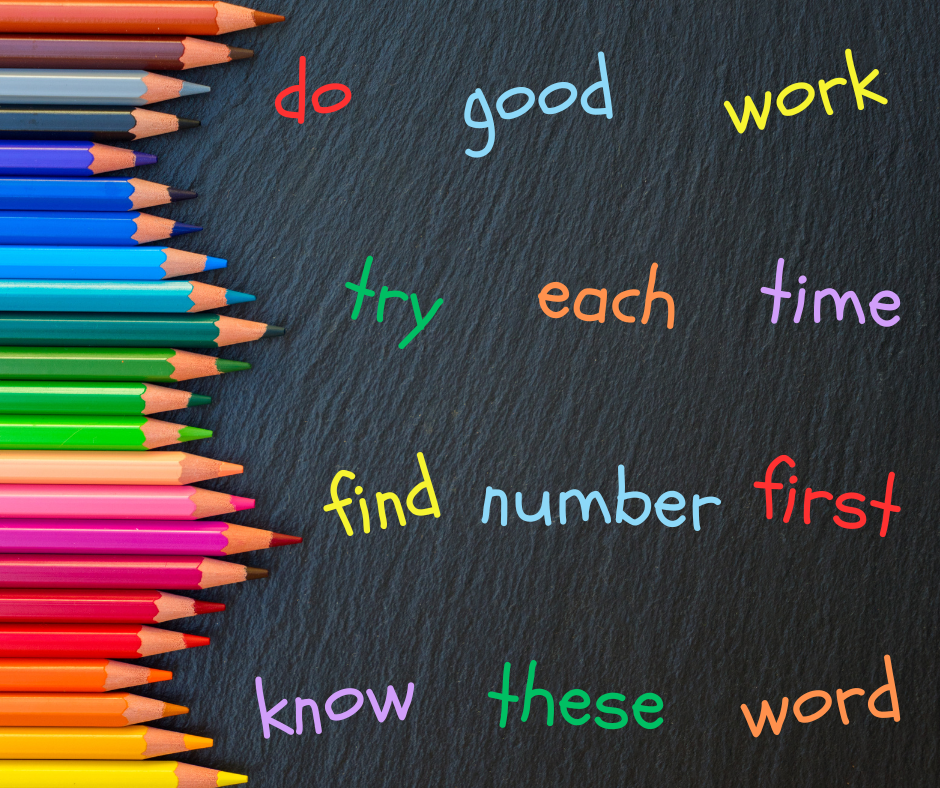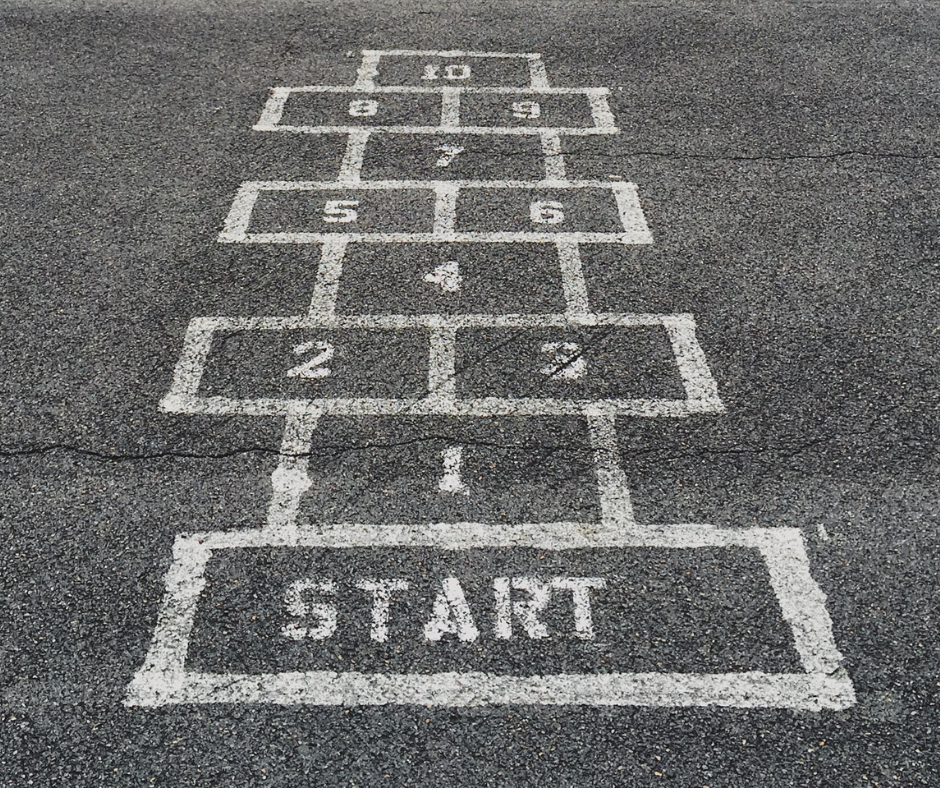
Moving and Learning with Sight Word Games
At Walkabouts, we understand the importance of literacy learning at a young age. Frequent reading and regular exposure to books help students develop into competent and capable readers. Engaging literacy instruction brings words to life, supporting students with improving word recognition, building vocabulary, and strengthening fluency.
Here are five ways to integrate movement with sight words. In all games, students should check each other’s work, and ask for teacher help if needed.
AROUND THE CLASSROOM WITH SIGHT WORDS
This game takes the concept of Around the World, the classic basketball game, and adds a sight word spin. Select the number of sight words each student must identify for their round, from 4-6 for younger students and 7-9 for older students. Based on the desired number of sight words, create that many spots around the classroom. Create a circular path. Identify the spots with masking tape or sticky notes on the floor.
Have each student write each sight word on an index card (one word per card) to create a collection of sight word flash cards. Students should hold their stack of sight words face down (blank side up). On each turn, students should flip the top card in their sight word pile. They should spell the word aloud, write it in the air with their finger or on the floor with a foot, and then say the sight word. If students correctly identify their sight word, they advance to the next spot. If they don’t know the sight word, students stay in their spot and don’t advance until they correctly identify a different sight word on a subsequent turn. Continue playing until everyone makes their way around the classroom.
MUSICAL SIGHT WORDS
In this game, students will play a game similar to musical chairs. Choose the same number of sight words as there are students in the class. Write each word on a paper plate. Use masking tape to tape the paper plates to the floor in a circle. Play an upbeat, kid-friendly song for 15-60 seconds. Tell students to dance as they move around the circle in a clockwise direction while the music plays. When the music stops, students should stand beside the paper plate they are closest to. Go around the circle, and ask each student to say the sight word on their paper plate. If students get the sight words correct, they stay in the game. If they don’t know the sight word, ask for a volunteer to say the word. Then, remove the plate with the sight word, and tell the student to return to their seat. Play the game for a predetermined amount of time or until there is one student left. The last student left in the game is the winner.
FIND A FRIEND AND A SIGHT WORD
In this game, students identify the sight words taped to their classmates’ (and their own!) backs. Create a worksheet that includes all students’ names and a line beside each name. Write each sight word from the class word wall on a piece of masking tape. Tape one word on each student’s back. Make sure all students have a clipboard (or something similar), the worksheet, and a pencil. Tell students to move around the classroom in a particular way (jumping, marching, sliding, tiptoeing, etc.), and stop to read and write the sight word on each classmate’s back. Tell students they should write the word on the classmate’s back on the line beside the classmate’s name. When students have written all of the sight words (except theirs), they should compare their list to the word wall to determine which sight word is on their back. No peeking or asking another classmate is allowed!
SIGHT WORD SCRAMBLE
In this game, groups of students will try to be the first to identify a sight word. For each group, write words on the board or on a large notepad, or place sight word flash cards on a desk. Divide the class into an even number of small groups or pairs. Tell two groups to stand with their backs to the sight words. Call out a sight word. After you call out the word, students should quickly turn to face the words and either point to and then erase the word from the board, point to and then cross out the word on the paper, or grab the sight word flash card. If desired, tell students to stand a distance from the sight words and move in a particular way to identify each word (stomp, strut, flap their arms, etc.). The first group to identify the word gets a point. Be sure each group gets the same number of turns. The team with the most points at the end of the game wins!
SIGHT WORD CORRAL
In this game, groups will search for sight words. Decide the number of groups that will play. Create a list of sight words. Using a chalk marker or permanent marker, write the sight words on ball pit balls, plastic Easter eggs, or other small balls. Create a set of sight word balls for each group, and provide a container for each group. Place the balls for each group in a shallow container or a contained space (hoop, taped area, etc.). Place the containers on the other side of the room. Give each group the list of words. Tell students they must find the sight words in order. In each round, two students from each group should take turns looking for sight words. After students have found the correct word on their list, they should check it off, and place it in a container on the other side of the room. When the sight word ball has been deposited, a new pair of students should search for the next sight word. Groups should continue the search until they have found all sight words on the list and deposited them in their container.
Get students engaged in reading and literacy learning with Walkabouts! Walkabouts are more than brain breaks. These web-based lessons activate pre-K through second grade content with fun, standards-based movement. This curriculum supplement integrates language arts, math, and reading content with real exercises, making active learning easy – all with no special equipment, training, or extra space needed! Ready to try Walkabouts? Sign up for a 30-day trial run today!





